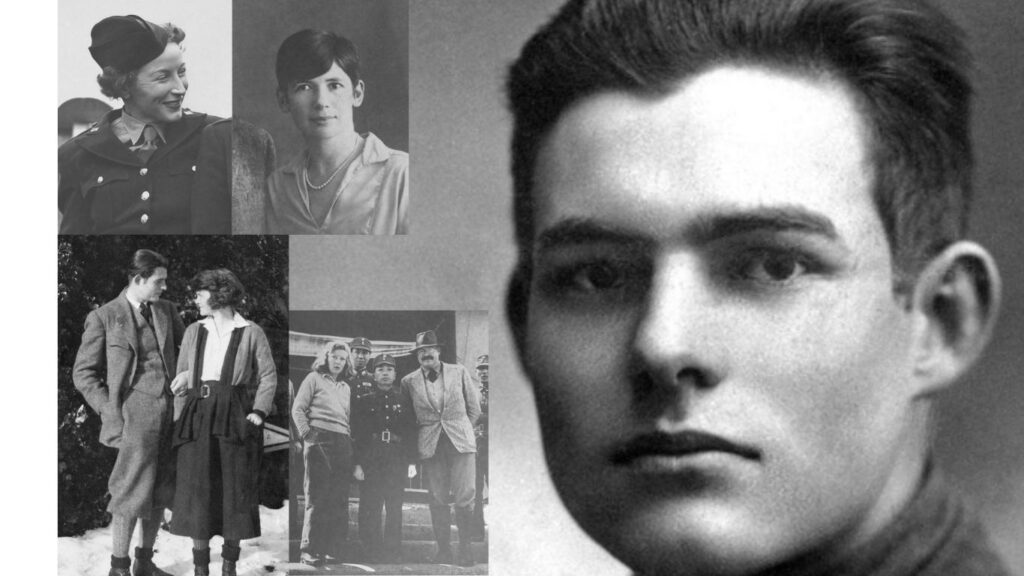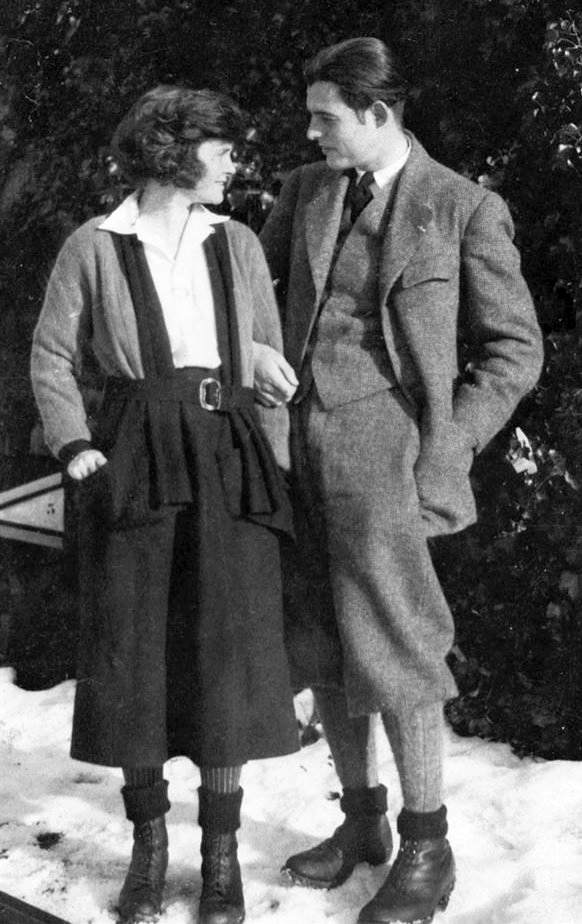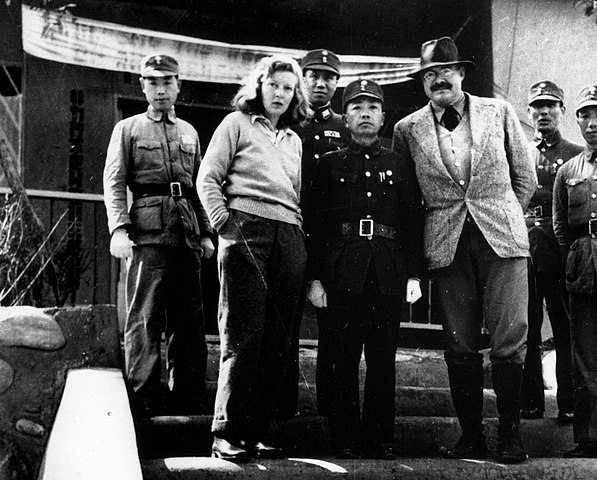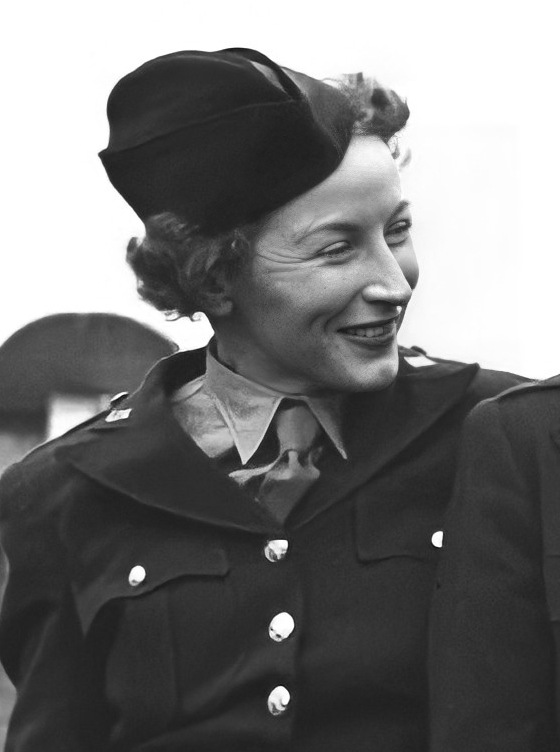Few writers have had a love life as rich, complex and tumultuous as Ernest Hemingway. Behind his virile writings and his image as a man of action hid the heart of a tormented artist, in perpetual search of an ideal and passionate love. As he himself wrote:
“Love is a wonderful thing, except to those who wallow in it.”
E Hemingway
His multiple conquests, marriages and breakups often fueled his literary inspiration.

Summary:
The first wife, Hadley Richardson

It was at the dawn of the 1920s that Hemingway met the woman who would become his first wife, Hadley Richardson.
“As soon as I saw her, I knew I had to marry her,” he confided.
Their love at first sight was mutual and the beginning writer married her in 1921. Hadley quickly became his muse and confidante:
“She was the best wife a man could wish for.”
But their romance is cut short when passion devours Hemingway, who falls in love with Pauline Pfeiffer in 1927, a rich heiress.
“Love is blind, that’s why it stumbles so often,” he later wrote in A Farewell to Arms.
The Pfeiffer years, marked by infidelity

The marriage to Pauline Pfeiffer lasted 13 years but was marred by the numerous infidelities of Hemingway, who said: “No one escapes the imprint of being a man“. It was during an adulterous episode that he met Martha Gellhorn in 1936, fascinated by this young journalist with a strong character.
“I wondered how I could have found any other woman attractive,” he confides. Hemingway divorced to marry her in 1940.
The stormy union with Martha Gellhorn

From the first years, their love is explosive. “No one ever lived as lightly as the two of us,” Hemingway recalled.
But Martha criticizes him for his selfishness and his misogynistic behavior. “Men have always been stupid, and that’s a bit of their privilege,” replies the writer.
Exasperated by his infidelities, Martha filed for divorce in 1945.
The Arrival of Mary Welsh Hemingway

In London, Hemingway married journalist Mary Welsh, 28 years his junior, in 1946. “That was the beginning of the rest of my life,” he says.
For 15 years, Mary braved the excesses and fits of jealousy of her aging husband:
“Life is having a wife you love, wonderful children, and whom she carried wonderfully.”
A tragic ending: Hemingway commits suicide
Their union ended tragically in 1961, when Hemingway committed suicide. In his farewell letter, he begs Mary’s forgiveness: “If you had lived a few more years with me, you might have reached the point of no return.”
Despite her excesses, Mary will remain one of the few to have accepted the writer’s torments until the end, as evidenced by her words:
“A love like ours never dies.”
Mary Welsh Hemingway
Behind this troubled sentimental life emerges the complex portrait of an insatiable man, in constant search of an unattainable romantic ideal. But also a heart tormented by its faults, as Hemingway admitted:
“We are all apprentices in the incredible fragility of life.”
Ernest Hemingway
Also discover: John Lennon-Yoko Ono: an intense and tumultuous love story
There are several reasons that can explain Ernest Hemingway’s tumultuous love life:
His passionate and bubbling personality
Hemingway was a man of fiery personality, driven by a strong appetite for life. His fiery temperament and thirst for adventure were also found in his love life. He was easily consumed by passion to the point of being unfaithful or abruptly breaking up to follow a new conquest.
His taste for risk and challenge
As an adventurer at heart, Hemingway seemed to seek risk and challenge, including in his romantic relationships. Each new woman represented a new conquest to pursue, before routine set in. He was hungry for thrills and renewal.
His seductive and charming side
Endowed with undeniable charm and magnetism, Hemingway attracted many women. His literary success and his exhilarating lifestyle must have added to his power of seduction. He found it difficult to resist female advances.
A need for artistic inspiration
His affairs and marriages were also fuel for his literary work. The intense emotions he experienced, the devouring passions nourished his inspiration as a writer. His conquests often turned into muses and sources of inspiration.
Unsuitability for married life
Despite his four marriages, Hemingway seemed to have difficulty adjusting to a long-term stable and faithful married life. His need for freedom, his touchy character and his excesses ended up pushing him to infidelity or breakup.
An image of a virile man to maintain
His public image as a virile man, hunter and adventurer may also have influenced his tumultuous relationships with women. Accumulating conquests was part of this masculine persona that he cultivated.
In short, Hemingway’s fiery temperament and impulses, combined with his status as an artist in search of inspiration, seem to have favored his many tumultuous romantic adventures. A restless sentimental life, like his hectic existence.
Also discover: Secret love story: Victor Hugo and Juliette Drouet
Ernest Hemingway: his love life in his novels and short stories
Ernest Hemingway drew on his tumultuous romantic experiences to inform much of his literary work. His passionate relationships, turbulent marriages and conquests often inspired the tragic and intense love stories present in his novels and short stories.
A Farewell to Arms (1929)
This semi-autobiographical classic is largely inspired by Hemingway’s relationship with his first wife Hadley Richardson. The main character Frederic Henry falls madly in love with nurse Catherine Barkley during the First World War, as was the case for the author and Hadley. Their passionate but fragile romance reflects the fleeting nature of Hemingway’s fiery first love.
For Whom the Bell Tolls (1940)
The stormy relationship between Robert Jordan and Maria is heavily inspired by Hemingway’s tumultuous marriage to Martha Gellhorn during the Spanish Civil War. Maria represents the strong and independent woman who fascinated and annoyed the author in his wife. Their incandescent but impossible love captures the explosive nature of this union.
The Snows of Kilimanjaro (1936 – short story)
This short story tells of the difficult agony of a very wealthy couple on safari in Africa. It is a thinly veiled satire of Hemingway’s unhappy marriage to Pauline Pfeiffer, a wealthy heiress who burned the couple’s fortune with her reckless spending.
The Garden of Eden (1986 – posthumous)
This unfinished novel contains long, highly detailed passages described as Hemingway’s “erotic memoirs” of his 1920s Paris. We discover how his first marriage to Hadley fell apart under the effect of his repeated infidelities and his “monstrous conduct”.
Drifting Islands (1970 – posthumous)
This collection brings together extracts from diaries and fiery love letters written for his various mistresses such as Adriana Ivancich or Denise Lefevre. These very crude writings bear witness to the novelist’s devouring romantic and sexual impulses.
Thus, Hemingway never ceased to draw on his tumultuous sentimental experience to create tragic but sublime love stories, rich in extreme emotions. His clashing and passionate loves were an inexhaustible source of inspiration for his art.
Also discover: Extraordinary love story: Brigitte and Emmanuel Macron



